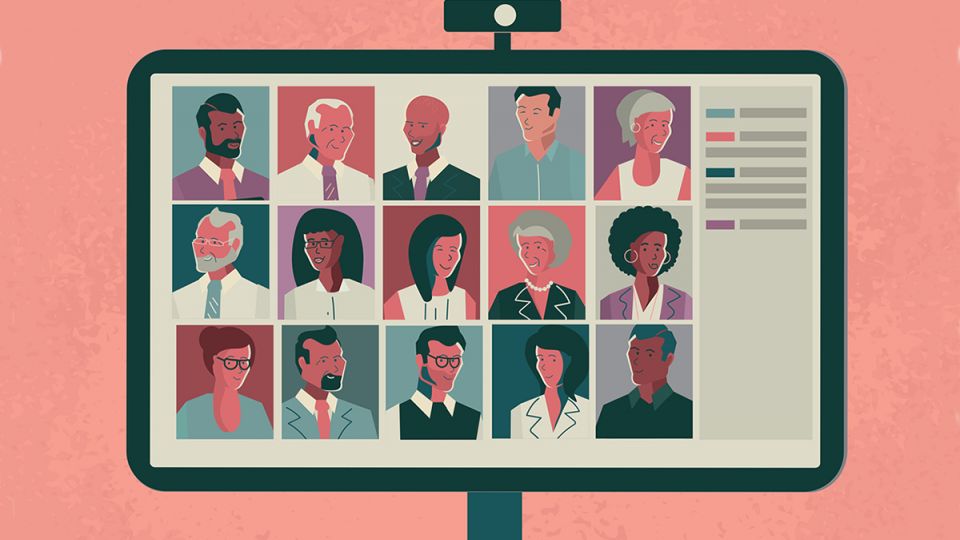Navigating a Remote Open Enrollment Season
Content, delivery and personalization are factors in providing the best employee education and support possible this year.
Open enrollment typically involves a great deal of planning and work for plan sponsors and their providers, but the COVID-19 pandemic has added even more factors for employers to consider.
In-person events have shifted to virtual sessions and online support, which might cause issues for employees who value face-to-face assistance, especially when it comes to health care. According to a report by the International Foundation of Employee Benefit Plans, only one-third of employees fully understand their health benefits, and a study by Alegeus found 88% of American workers are not health care literate.
A remote environment can be challenging for workers who would rely on those in-person sessions with a human resources (HR) representative or benefits provider.
“In general, most people don’t understand the healthcare system well enough to be great advocates for themselves, particularly when choosing the right health plan,” says Brian Colburn, senior vice president (SVP) of corporate development and strategy at Alegeus. “In a remote environment, people tend to be reluctant to ask for help.”
Employers might not be able to host in-person benefits education sessions, but they can apply tactics to provide the best communications and employee help possible. The first tip is to implement a simple, but strategic, process, advises Kevin Robertson, SVP and chief revenue officer at HSA Bank. “If they just take whatever materials and formats they’ve done before, throw on a webinar and make up an email with links, they’re not going to have a very good outcome,” he warns. “That’s not achieving the success or whatever the employer set out to do.”
Instead, map out which benefits are being emphasized this season. Are those telehealth/telemedicine benefits, mental health resources or heath savings accounts (HSAs)? Recognize those points of emphasis and then break them down into smaller chunks, says Robertson. Be wary of overwhelming employees with an influx of information, whether through paper communications or online. Sending these communications in smaller doses will drive better understanding among employees.
Apply Multiple Formats
Greg Wilson, executive vice president and head of institutional client businesses at Ayco, recommends creating videos, holding webinars and hosting Zoom drop-ins on specific topics. “Make this information easily accessible. … Limit the number of changes, except for those that tie with the current environment, like mental health, paid leave and child care, to alleviate the stress from employees,” he says. Online calculators and PDFs on electronic mediums could also help.
Implementing several tech-driven tools can mimic the experience of sitting down with an HR representative or benefits provider, Colburn adds. For example, some benefit decision tools suggest plans based on an employees’ medical history, including medical benefits from the past, prescription drugs, risk tolerance, etc. “That’s important because this is often what would happen if you were trying to sit with someone from HR to pick the right plan for yourself,” Colburn says. “Those are good ways to reduce the burden on HR, but to also get employees better tools that lead to better outcomes, in a year that’s going to be really important for people to have that type of support.”
At Ayco, Wilson says he has seen more requests for digital communications in recent months. However, employers that are concerned about their fiduciary role in providing e-disclosures may be cautious about delivering electronic communications. In this case, plan sponsors can create a library of pre-recorded webinars on different topics, Wilson says. Ayco is also leveraging its digital financial wellness journey, which has the ability to customize content for each company and the company’s own specific benefits. “The sensitivity surrounding specific client information is critically important, so we work with each company to work through their systems,” he says.
The International Foundation of Employee Benefit Plans reported that several organizations were concerned about communicating open enrollment information for those without a computer or email. Forty-three percent of employers said it was challenging trying to communicate with that population.
In this case, Robertson recommends using a strategy in which employers send printed materials to employees’ homes and then invite the employees to join a conference call where both groups can walk through the printed materials. “Since there is no technology—no video, no on-screen visuals, etc., employers should keep things very simple, not move too fast and confirm employee understanding along the way,” he says.
Consider Other Decisionmakers
Remote work and learning environments mean families are home together, so more decisions can be made as a group now. Open enrollment is no exception. More employers are welcoming a second decisionmaker, such as a spouse or other partner, in the process given the increase in webinar use, Robertson says.
“There’s far more of a focus on live and pre-recorded videos and webinars that employees can access on their own, sitting on their couch in the evening with their spouse or partner and engaging them in an ongoing way,” Wilson notes.
Recognize the Impact of COVID-19
The most important step is understanding the pandemic’s effect on your employee population, emphasizes Robertson. He recommends adding more time to the open enrollment window for employees to make decisions about their benefits.
At Ayco, Wilson and his team are holding small group sessions with 15-minute overview presentations on benefits as a part of an employees’ overall financial planning. “We’re delivering live webinar videos, with topics around benefit configuration and providing those tools to our HR teams to help them target different demographics,” he says. “We’ve been hosting seminars where they target different groups with different needs.”



